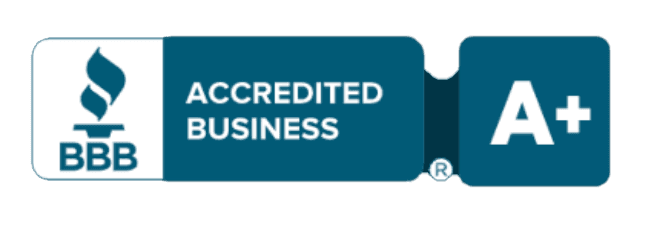Financial Forecasting for Small Businesses: Gaining Control of Your Future

In today’s business landscape, small business owners face the challenge of navigating through financial uncertainties to secure a prosperous future for their enterprises. At the heart of this challenge lies the need for adequate financial forecasting. This tool goes beyond mere prediction as a strategic compass guiding businesses toward stability and growth. Recognizing this, xendoo strives to be an ally for small businesses, offering a comprehensive suite of financial tools and services designed to empower entrepreneurs. From advanced cloud-based accounting software and AI-driven analytics to personalized financial advisory services, xendoo equips small business owners with the resources to create precise financial forecasts, manage cash flow efficiently, and make informed decisions. Moreover, for small business management, gaining control of their financial future is necessary and an added advantage. Amid this crucial requirement, financial forecasting emerges as a beacon of guidance, empowering businesses to navigate uncertainty confidently. This is where the role of Fractional CFOs and comprehensive financial services like xendoo become pivotal. This blog sets the stage for an in-depth exploration of how xendoo’s solutions and expert guidance transform the financial forecasting landscape, enabling small businesses to envision and actively shape their financial future. Cloud-Based Accounting Software: Cloud-based accounting software, prominently featured in xendoo’s suite of financial tools, revolutionizes how small businesses approach their finances. Platforms like QuickBooks Xero offer more than convenience; they provide a foundation for transformative financial management. By enabling real-time tracking and analysis, these software solutions ensure that businesses can keep a constant pulse on their financial health. Integrating expense tracking, invoicing, and detailed financial reporting streamlines the complex financial forecasting process. This not only demystifies the gathering and analysis of critical financial data but also enhances the accuracy and reliability of forecasts. For small businesses, this means the ability to anticipate financial challenges and opportunities with a new level of precision. By leveraging cloud-based accounting software, businesses can make informed decisions, plan strategically for the future, and maintain a competitive edge in their respective markets, all through the power of efficient and accessible financial management tools provided by xendoo. AI and Machine Learning Tools: Integrating Artificial Intelligence (AI) and Machine Learning (ML) in financial forecasting represents a revolutionary leap forward. xendoo harnesses these advanced technologies to offer small businesses a competitive edge in financial management. Our AI and ML algorithms are designed to delve deep into extensive datasets, extracting patterns and trends that might elude traditional analysis. This capability enables the prediction of future financial outcomes with high precision and furnishes businesses with actionable insights to guide strategic decision-making. Automating forecasting processes through these intelligent tools reduces the potential for human error, ensuring that the forecasts are reliable and robust. By embracing AI and ML, xendoo elevates financial forecasting from a necessary chore to a strategic asset, empowering businesses to anticipate challenges, seize opportunities, and confidently navigate the future, thus markedly enhancing their forecasting accuracy and overall financial strategy. Financial Dashboards and Analytics Platforms: Consequently, xendoo’s financial dashboards and analytics platforms are pivotal tools for small businesses, providing a consolidated view of financial data and valuable insights into financial health and forecasting metrics. By offering a comprehensive visualization of their financial data, our service enables small business owners to understand their current financial position and forecast future trends. This comprehensive view empowers proactive and strategic decision-making, allowing businesses to make informed choices to drive growth and success. With xendoo’s dashboards, small business owners can efficiently monitor critical financial indicators, identify patterns, and anticipate future challenges and opportunities. Visualizing financial data in a single view enhances transparency, fosters better financial management, and equips businesses with the knowledge to navigate their financial landscape confidently and strategically. Cash Flow Management Tools: xendoo recognizes that managing cash flow is crucial for the sustainability of small businesses. Our platform offers invaluable insights into cash flow patterns, empowering businesses to effectively manage their liquidity and prevent cash shortages. Through our cash flow management tools, entrepreneurs can understand their cash flow dynamics comprehensively, enabling them to maintain a healthy financial position and allocate resources optimally. By monitoring cash inflows and outflows, businesses can make informed decisions regarding expenditures, investments, and operational strategies. This proactive approach safeguards against liquidity challenges and facilitates the prudent allocation of funds toward growth initiatives. Ultimately, xendoo’s cash flow management tools provide small businesses with the insight and control necessary to navigate their financial landscape confidently and financially. Online Financial Advisory Services: xendoo’s commitment to facilitating the success of small businesses extends beyond providing software solutions. While fintech companies and online platforms offer personalized financial advice, xendoo offers a comprehensive package with access to financial experts and cutting-edge software solutions. This unique integration enables small businesses to benefit from expert financial forecasting and risk management guidance while leveraging the latest financial technology. By combining the insights and expertise of financial experts with advanced software, xendoo empowers businesses to make informed, strategic decisions while securing their financial future. This approach provides small businesses the resources and support to navigate complex financial landscapes confidently, ensuring sustainable growth and success. In conclusion, small business owners face the crucial challenge of navigating financial uncertainties to secure a prosperous future in the competitive business world. Particularly in this context, the role of Fractional CFOs and comprehensive financial services like xendoo becomes pivotal. xendoo’s suite of financial tools and services, which includes cloud-based accounting software, AI and machine learning tools, financial dashboards, cash flow management tools, and online financial advisory services, equips small business owners with the resources they need to create precise financial forecasts, manage cash flow efficiently, and make informed decisions. xendoo’s innovative solutions and expert guidance transform the financial forecasting landscape, enabling small businesses to envision and actively shape their financial future. By providing businesses with robust and reliable financial management tools, xendoo empowers them to make informed decisions, strategically plan for the future, and maintain a competitive edge in the market. Through advanced technology and expert support, xendoo ensures sustainable growth and success for small businesses. Visit xendoo.com today to
From Startup to Success: How Proper Accounting Practices Fuel Business Growth

It is exciting to start a business, but beyond having a great idea, one needs to work out many things as well. Small and medium-sized enterprises (SMEs) frequently need help shaping their brand in a constantly changing environment where invention, market comprehension, and efficient management are key factors. One crucial thing that may become a success or failure determiner for a startup is how it handles its financial affairs. Good accounting practices not only conform a business to regulations but also create valuable information that can grow the business. This article discusses how entrepreneurial accounting helps progress from a startup to success. Understanding the Essence of Bookkeeping Accounting combines precise and well-kept bookkeeping, which is vital in every flourishing business. Bookkeeping ties these deals together by registering any financial transaction: sales, purchases, receipts, and payments. Maintaining flawless and up-to-date records for small business owners involves keeping records of how income and expenses are split, how cash flow is managed, and how taxes are prepared. Based on my experience, the critical idea of a successful SMB accounting system is in high demand. Bookkeeping hit the boundary of causing calculated mathematical operations, including all processes of systematic transaction recording, accurate expense tracking, and the efforts in managing the cash flow. Getting bookkeeping help from expert firms like xendoo may jump-start your small business’s journey to success. Not only does it aid in time management, but it also guarantees the accuracy of financial records in line with regulations. The fact that xendoo.com exists as an accounting outsourcing firm makes it, unlike an ordinary accountant or calculator. When a CEO outsources the handling of the finances to the experts, they can free time and gratis it again to impelling business growth while upgrading their company’s finances. This allows them to channel their energies into what they do best – their most apt trade. Challenges Faced by Small Business Owners Accounting requirements can be challenging for many small enterprises because they grow without basic operational procedures during the initial business period. Time pressure, resource scarcity, and the lack of professional skills that contribute to the quality of financial management are relatively common obstacles. As a result, wrong entries in bookkeeping may emerge, which can result in financial discrepancies, missed tax deadlines, and, in the end, exactly, threaten the sustainability of the business. In addition, companies with expanding operations and a large quantity of paperwork will see a wide variety in their transactions boom at an equal charge. During those moments, guide bookkeeping systems cannot reply to operational worries, making printing errors vital. Small commercial enterprise owners increasingly turn to outsourced bookkeeping services, which offer a strategic alternative for financially retaining a commercial enterprise, even permitting the owner to pay attention to their number one duties. The Advantages of Outsourced Bookkeeping Engaging a bookkeeping company is like a gift in a box since businesses can handle bookkeeping alone or pay high organization accounting fares. Another main advantage is the availability of talented accountants, no complete staff hiring, and, therefore, managers. These experts ensure compliance with the rules and, if necessary, inspect compliance through audits and checklists. Unlike these, contracting out in one way or another allows the proprietorships to grasp all over their production schemes, connections, and clients to achieve all-over productivity and scalability. Moreover, software of such power helps individuals navigate processes that let them eliminate errors or missteps and take quick actions from the software, making them a top competitor. Driving Business Growth Through Effective Financial Management In today’s competitive world, where rival features are constantly emerging, agility and adaptability are crucial for either survival or growth. Well-structured accounting practices provide small business owners with the necessary inputs for decision-making, identification, and handling of risks, as well as opening up to the opportunities that may be available. Through precise financial records, businesses can focus on the trend of cash flow, monitor expenses, and identify when efficiency is sliding low or the company is overspending money. Furthermore, strategic financial planning empowered by outsourced bookkeeping services supports businesses in devoting the resources where they are needed and choosing the investments that make the best economic sense. All these financial decisions are taken if you deal with expanding operations, new products, or entering new markets, but they create a base for sustainable development and profitability. Moreover, outsourcing the bookkeeping processes will associate the business with credibility and reputation, build trust with shareholders, and invite investment or partnerships. Credible and trustworthy financial reporting will favor transparency and fiscal responsibility, again showing that these features are essential for building a marketplace. Navigating Growth: Solutions Offered by xendoo.com xendoo.com gives small and medium-sized businesses (SMBs) the tools they require to explain and manage their financials and, in turn, to grow sustainably and remain competitive. xendoo.com, being a bookkeeping expert platform, helps local businesses (SMBs) take control of their finances and minimize time and resources that can be used to perform their core business activities. By carefully developing and optimizing tax planning strategies, xendoo.com translates those savings into business growth, boosting financial resources strategically. Apart from CFO services outsourced through xendoo.com, owners and business managers can set strategies that place them in superior decision-making characteristics. SMBs, having a partnership with xendoo.com, could work with a group of relying professionals with the required competencies and tools for the successful handling of financial challenges and for maximizing profit. Success as SMBs see the light at the end of the tunnel with xendoo.com by their side, and it’s just a matter of time before they reach the echelons of successful businesses with confidence and clarity of purpose, finally digging their feet deep in the path to a sustainable future. In conclusion, accounting discipline is necessary for the growth and sustainability of small and medium-sized enterprises. To eliminate difficulties in financial accountability, entrepreneurs should consider the utility of outsourced bookkeeping. Such a move would boost the overall development of the business. It is catching up because effective bookkeeping makes perfect record-keeping, a strategic tool
Straight-Line Depreciation Formula: How To Use and What It Means

At some point, you may need to buy equipment, tools, and other assets for your business. Those assets tend to wear out after several years and lose their value. Luckily, businesses can write off those expenses if they know about depreciation and how to calculate it. The straight-line depreciation formula is the simplest and most common way to calculate depreciation. In this article, we’ll go over the basics of depreciation and show you how to calculate it with the straight-line depreciation formula. What Is Depreciation? Depreciation is the decrease of an asset’s value over time. You need to know about depreciation for tax purposes and to make sure financial statements are accurate. Business owners and accountants can use it to write off the costs of certain assets. Depreciation is typically calculated using one of several methods. Most commonly, you’ll use the straight-line method or the declining balance method. Tax considerations, accounting principles, or other factors will determine which method you should use. What Is Straight-Line Depreciation? Straight-line depreciation is more simple than the declining balance method. The straight-line depreciation method spreads the cost evenly over the life of an asset. Each year, you expense the same percentage. For example, let’s say a company purchases a $1,000 machine. The machine has a five-year useful life. The useful life represents how many years an asset will last. It’s also an estimate. Under the straight-line method, the machine would depreciate by $200 per year. Then, you would report the depreciation expense on your company’s annual income statement for five years. Straight-Line Depreciation Formula – How To Calculate It To calculate an asset’s value, you need to know the straight-line depreciation formula and how to apply it. The straight-line depreciation formula is: Depreciation expense = (Asset cost – Residual value) / Useful life Asset cost stands for the price at the time of purchase. For example, a golf course buys a cart for $12,000. The asset cost is $12,000. The residual value is the asset’s estimated value by the time it reaches the end of its useful life. It is also sometimes called salvage value. The straight-line depreciation formula can be used for any type of asset. However, it is most commonly used for depreciating business assets. This can include: Buildings Machinery Equipment Vehicles Furniture You can use the formula to calculate your straight-line depreciation expense. It’s the amount that can be written off each year. Straight-Line Depreciation Example Consider an equipment purchase for $15,000. It has a useful life of five years. You estimate that at the end of five years, the equipment will have no value. The depreciation each year would be $3,000 (($15,000 – $0) / 5). A depreciation chart would look like: Beginning Value Depreciation Ending Value Year 1 $15,000 $3,000 $12,000 Year 2 $12,000 $3,000 $9,000 Year 3 $9,000 $3,000 $6,000 Year 4 $6,000 $3,000 $3,000 Year 5 $3,000 $3,000 $0 Other Depreciation Methods There are three main types of depreciation: straight-line, declining balance, and sum-of-the-years’ digits. We know that straight-line depreciation spreads the cost evenly over the life of the asset. Although the straight-line method makes it easier to calculate depreciation, it does not reflect the true value or usage of an asset over time. For example, after you purchase a vehicle, you typically use it the most during the first few years. However, it can still have value several years after. Let’s look at other methods. Declining balance method Declining balance depreciation considers that an asset will be used more often in the first few years, so it will lose value then. You can calculate the declining balance method by multiplying a fixed depreciation rate by the current book value (CBV). The CBV is the asset’s estimated value in that accounting period. If we look at the same example as above: Beginning Value Depreciation Ending Value Year 1 $15,000 $3,000 ($15,000 * 20%) $12,000 Year 2 $12,000 $2,400 ($12,000 * 20%) $9,600 Year 3 $9,600 $1,920 ($9,600 * 20%) $7,680 Year 4 $7,680 $1,536 ($7,680 * 20%) $6,144 Year 5 $6,144 $1,229 ($6,144 * 20%) $4,915 Note that the declining balance method produces larger expenses in earlier years and smaller expenses in later years. There is also the double-declining balance method which uses twice the rate of depreciation (i.e. 40% in the example above). You may use the declining balance method to depreciate assets that lose value and become obsolete quickly. For example, you might use it to calculate depreciation for computers since they have a shorter useful life. Sum-of-the-years The sum-of-the-years’ digits method is more complex. It provides a more accelerated schedule of depreciation than straight-line or declining balance methods. You calculate the yearly deduction by multiplying a fraction (the sum of all digits used to represent time periods divided by time period) by the asset cost. Then, you minus any salvage value. In our earlier example, you would calculate Year 1’s deduction by taking 5 divided by 5+4+3+2+1 multiplied by $15,000. You’d calculate Year 2’s deduction by taking 4 divided by (5+4+3+2) 5+4+3+2+1. Then, you multiply by $15,000. As you can see, this approach gets confusing. In most cases, you won’t need to use the sum-of-the-years. Beginning Value Depreciation Ending Value Year 1 $15,000 $5,000 ($15,000 * 5/(5+4+3+2+1)) $10,000 Year 2 $10,000 $4,000 ($15,000 * 4/(5+4+3+2+1)) $6,000 Year 3 $6,000 $3,000 ($15,000 * 3/(5+4+3+2+1)) $3,000 Year 4 $3,000 $2,000 ($15,000 * 2/(5+4+3+2+1)) $1,000 Year 5 $1,000 $1,000 ($15,000 * 1/(5+4+3+2+1)) $0 When Do You Use the Straight-Line Method? You should use the straight-line formula to depreciate an asset that steadily loses value each year. Assets like real estate and large equipment often use straight-line depreciation. It’s simple to calculate. However, the downside is that it does not reflect the true cost of certain assets. When you know what depreciation is and how to calculate it, you can recoup some costs for purchasing assets. Depreciation can also reduce the amount of taxes owed. Luckily, you don’t need to do all the bookkeeping and accounting to calculate
What Is Deferred Revenue? Journal Entry and Examples

As a business owner, you may have heard the term deferred revenue before. But, what is deferred revenue and what does it mean for your business accounting? Deferred revenue is money that you receive from clients or customers for products or services that you haven’t delivered yet. In accounting, deferred revenue can affect your balance sheet and profit and loss statement. You need to understand how to recognize your revenue and record it on the profit and loss statement to do accounting properly. We’ll take a closer look at deferred revenue and what you need to know for your bookkeeping and accounting. What is deferred revenue? As mentioned, deferred revenue is money that a company has received but hasn’t earned yet. This usually happens when a company sells a product or service but does not deliver it until a later date. Deferred revenue only applies to businesses that use accrual basis accounting. An example of deferred revenue is if a customer buys a one-year magazine subscription. The company will recognize the revenue over the course of the year rather than when the customer pays. Recognizing revenue gradually helps companies match their expenses to the revenue they are actually earning. This provides a more accurate picture of your financial health and performance. Deferred revenue can also be used as an accounting tool to smooth out bumps in income or expenses. By deferring some revenue, a company can even out its cash flow and make its financials look steadier and more predictable. However, deferred revenue can also create problems if it is not managed carefully. If you overdo it, you may misrepresent your earnings and violate accounting rules. For this reason, companies need to exercise caution when recognizing deferred revenue. Make sure that you manage it transparently and stay compliant with accounting standards. When do you use deferred revenue? Companies that use cash basis accounting do not have deferred revenue. In cash basis accounting, a company considers the money it receives as revenue when it receives it. Deferred revenue applies to companies that use accrual basis accounting. This method accounts for revenue when a company performs the services. Is deferred revenue an asset or liability? In accounting terms, deferred revenue is classified as a liability because it represents a future obligation. When goods or services are delivered, deferred revenue becomes revenue. Deferred revenue increases your company’s short-term liabilities. It may also be taken into account when you apply for loans. It’s important for a company to understand its future obligations and ensure that it has funds to provide the services or products. Deferred revenue vs. accrued expenses On the other hand, accrued expenses are expenses that a company records before they’ve made a payment. Like deferred revenue, accrued expenses only apply to companies that use accrual basis accounting. Cash basis companies don’t record expenses until they pay the vendor. For example, let’s say a company hires a cleaning service to clean its offices monthly. The cleaning company does not bill the client until the year is completed. The company should still recognize the monthly expenses for the cleaning services. In the example above, the company would record a cleaning expense each month (i.e. $500). Then, it would increase the accrued expense account. Accrued expenses are different than accounts payable. For an expense to be recorded in accounts payable, you need to receive an invoice or request for payment. For accrued expenses, you haven’t received the invoice, and the final amount due may not have been determined yet. How does deferred revenue work? When a company receives funds to cover future work, it’s considered deferred revenue. This can include deposits or down payments. These funds are deferred revenue regardless of whether the company invoices the client. The company will not record the money as revenue until services are performed or goods are delivered. It’s important to review the deferred revenue account on a monthly basis. This ensures that you record all revenue for delivered work on the profit and loss statement. Recording deposits as deferred revenue prevents companies from paying taxes on revenue that has not yet been earned. For example, if you offer a refundable deposit and a client cancels a project, you’ll have to return the funds. You don’t want to pay taxes on that deposit, since you had to return it. How do you make a deferred revenue journal entry? To record a deferred revenue journal entry, you first need to create a deferred revenue liability account. These accounts are generally current liabilities unless you expect the project to take several years. In that case, you would consider it a long-term liability. To record the funds that you receive, the deferred journal entry debits the bank account. Then, it credits the liability account to show your obligation to provide future services. Debit Credit Cash in Bank $X Deferred Revenue $X If you invoice a customer for future services, the journal entry would debit accounts receivable instead of cash in the bank. Debit Credit Accounts Receivable $X Deferred Revenue $X Note that neither of the entries above will affect the profit and loss statement. The initial recording of deferred revenue only affects the balance sheet. When a company fulfills its obligation by providing goods or services, it recognizes the revenue. When this happens, it reduces the deferred revenue amount and increases the company’s revenue. Debit Credit Deferred Revenue $X Revenue $X Deferred revenue example Consider a pool company that installs backyard pools. The projects typically cost $100,000, and the company collects an initial deposit of $1,000 to start scheduling the work. Once the work has started, the company collects an additional 50% of the purchase price. The final payment is collected when the pool is fully permitted by the city. In this example, the company would record the following journal entries for deferred revenue. 1/1/2021: Initial Deposit for Jones’ pool Debit Credit Cash in Bank $1,000 Deferred Revenue $1,000 3/1/2021: Collection of 50% of the purchase price when work starts
LLC vs. S corp: Which is right for your business and taxes?

One of the most important decisions for business owners is which type of business entity to form. Your business structure impacts your tax savings, accounting practices, and how you pay yourself. Examples of business structures include: Businesses often weigh the pros and cons of forming an LLC vs. S corp. xendoo does online accounting, bookkeeping, and taxes for businesses, so it’s a question we answer frequently. In this article, we’ll explore the differences between an LLC vs. S corp, and help you decide which structure is best for your business. Why your business structure matters Choosing the right business entity is crucial for several reasons, including: What’s the difference between LLC vs S corp? Overall, LLCs have a more flexible structure, while S corps can save money on taxes in the long run. The biggest differences between LLCs and S corps are ownership, taxes, and management structure. Here’s a breakdown of each. LLC S corp Ownership No restrictions on the number of members or their citizenship status. Must be 18 years or older. Limited to 100 shareholders who must be US citizens or resident aliens. Taxes Taxed as a pass-through entity. Subject to self-employment taxes. Taxed as a pass-through entity. Saves on payroll taxes by paying owners a salary and distributions. Management structure May choose between member-managed or manager-managed Managed by shareholders and officers Reporting Most states require filing annual reports along with an annual reporting fee or tax More complex reporting requirements than LLCs. Must file yearly reports and documentation with the state Below, we’ll look at LLCs and S corps in more detail to help you decide which is the best option for your company. What’s an LLC? A limited liability company (LLC) combines the liability protection of a corporation with the tax benefits and flexibility of a partnership. The key points to know about operating as an LLC are: Requirements for an LLC generally include: Advantages of LLCs Disadvantages of LLCs Protects the owner’s personal assets Subject to self-employment tax, meaning a possible higher tax bill It’s a pass-through entity, so you include business income on your personal tax return. This way you avoid double taxation (where the corporation and shareholders pay tax on the same income). Fewer options for raising capital compared to corporations Offer greater flexibility in management and ownership structure The multi-member structure can become complex How LLC taxes work LLCs don’t pay corporate income tax. Instead, they pass through their tax liability to the business owners. In an LLC with multiple owners, each owner includes their share of the company profits and losses on their personal income tax returns. However, LLCs have the option to choose a corporate taxation structure with the IRS. Choosing a corporate tax structure can be an advantage for high-income-earning LLC members. In an LLC with a corporate tax structure, the LLC would file a corporate income tax return and pay the corporate tax rate instead of passing the liability on to the members. LLC ownership LLCs have a very flexible ownership structure, with the only requirement being that members need to be at least 18 years old. An LLC can have one or multiple members, with no maximum number of members. Also, owners can be individuals, corporations, other LLCs, or foreign entities. LLC management structure An LLC provides its members with more flexibility than an S corp. There are two types of LLC management structures: member-managed and manager-managed. In a member-managed LLC: In a manager-managed LLC: Unlike in a member-managed LLC, members of a manager-managed LLC can’t make decisions on behalf of the company. Members also can’t interfere with the LLC manager’s operational decisions. Most LLCs include their management structure with their articles of organization. What’s an S corp? An S corporation is a corporation that chooses to pass its tax liabilities and tax credits to its shareholders for federal tax purposes. An S corp is a tax classification. It offers the same personal liability protection as a traditional corporation without a corporate income tax. Most S corps start as traditional corporations (called C corps). To avoid double taxation, or for other reasons, corporations can file an S corporation election with the IRS. However, not all corporations meet the requirements for an S corp status. Advantages of S corps Disadvantages of S corps Provides limited liability protection for shareholders Ownership restrictions, such as 100 members max and only one class of stock As a pass-through entity, it’s not subject to corporate income tax Must pay a salary to shareholders Can save on employment taxes by paying shareholders both a salary and dividends Complex tax filing requirements How S corp taxes work S corps pay taxes as pass-through entities. Instead of paying the corporate tax rate, shareholders report their share of income and losses on their personal income tax returns. S corps need to pay their shareholders a reasonable salary and withhold employment taxes like Social Security and Medicare (roughly 35% to 40% of the shareholder’s total take). They can also pay out dividends to shareholders from the company’s remaining profits. This distribution would not be subject to employment taxes which would equate to a 15.3% tax savings. It can help companies save money on income taxes in the long run while avoiding double taxation. S corp ownership To qualify for S corp status, the corporation must meet the following requirements: S corp management structure S corps have specific requirements regarding their management structure. An S corp must have shareholders and officers. Shareholders can play a dual role by choosing a shareholder-officer position, instead of hiring officers. Some companies also have a board of directors, but it’s not mandatory. If the company has a board of directors, the shareholders typically elect them. S corps must also follow certain corporate formalities, including holding annual meetings and maintaining proper records of company activities. Regulations vary by state, but they usually include recording meeting minutes. How to choose between an LLC or S corp Choosing between an LLC and an
Best business banks of 2023

The biggest rule of thumb when running a company is to keep your personal and business finances separate. To do that, you need to choose the best business bank for you, which may not be the same one you use for your personal finances. Business bank accounts have different terms and benefits than personal accounts. As an online accounting service, xendoo works with many companies and business banking services. The best business bank for you depends on your particular needs. But there’s much more to consider. Some banks are stronger in commercial lending, while others have stronger lines of credit. We’ll compare the best business banks and their features to help you decide which options are right for you. Review each bank’s rates and services to determine which suits your needs. How to choose a bank for your business Choosing a bank is a big decision in your business journey. However, there’s no one-size-fits-all business banking solution. Factors like your monthly revenue, number of cash payments, and company structure (LLC, S corp, C corp, etc.) will influence which features you need most. You may also want to get startup funding or a loan from the same place you do your banking. Although these factors may vary, there are some criteria all companies should look at when choosing a banking partner. Here are the features we looked at to evaluate the best business banks. View-only access, wires, and online banking As a baseline, all business banks must have robust technology to support VOA (view-only access), wires, and online statements. You can share view-only access to your bank statements with bookkeepers, accountants, and other trusted financial partners. They’ll only be able to view, not make changes to, the data they need to record and manage your finances. Fees and costs Some banking services come with fees and financial requirements that might not be obvious at first. Common banking fees include: Opt for a bank that provides transparency in its fee structure and offers the best value. Annual Percentage Yield (APY) In simple terms, APY is how much an account can earn in a year through interest. However, it’s not the same as interest rate because it also includes compound interest. For example, let’s say you open an account with 1% APY and your first deposit or principal balance is $20,000. Then, every month you deposit another $20,000. Instead of only earning interest on the original amount, compounding interest factors in the updated account balance. In-person locations If you run an online business and rarely have cash transactions, a bank with in-person locations might not be a priority for you. Instead, it might be more convenient to look for online banking solutions. If you have cash transactions, which is common with franchises, retail stores, and restaurants, physical bank locations are more important. You might need to make frequent cash deposits and prefer in-person service. 10 Best business banks Whether you’re considering switching banks or starting a business checking account for the first time, you can compare features, fees, and more below. 1. Wells Fargo Best for: Companies that want loans, business checking, and in-person banking. Wells Fargo is one of the oldest banks in the United States. However, its reputation has taken some hits in recent years. But, that also means that it is under heavy scrutiny from regulators and is focused on regaining consumer trust. Overall, Wells Fargo has a huge physical presence, which might be a fit if you value in-person banking. But, its past actions and high fees for overdrafts, transactions, maintenance, and more make it less than ideal. Pros Cons Physical locations in over 40 states High monthly fees and other costs You can open an account online No free checking accounts 2. Chase Best for: Companies of all sizes that want a wide range of business and personal financial services (checking, savings, financing, mortgage, etc.) Chase offers many types of business banking accounts to suit different business sizes and needs. Let’s take a closer look at each in the comparison below. Business Complete Banking Performance Business Checking Platinum Business Checking Monthly fee $15 (waived with $2,000 minimum balance) $30 (waived with a $35,000 minimum average balance) $95 (waived with a $100,000 minimum average balance) Minimum deposit requirement Not available Not available Not available Transaction limit 20 250 500 Deposits Unlimited electronic $5,000 free cash deposit limit Unlimited electronic$20,000 free cash deposit limit Unlimited electronic $25,000 free cash deposit limit APY No No No Member FDIC Yes Yes Yes Chase has locations in over 29 states and over 16,000 ATMs. It might be convenient if you need in-person banking and already have a personal banking account. If you have a lot of monthly transactions or don’t want to worry about banking fees, then Chase isn’t the best business bank for you. Pros Cons Multiple checking account options to suit different business needs Monthly fees, but they are waived if you meet the account balance threshold Wide network of branches for in-person service No APY for business checking 3. Bank of America Best for: Businesses that have large, monthly cash deposits and need in-person services. Bank of America has two business banking accounts: Fundamentals and Relationship. The Fundamentals account is more suitable for small-to-medium businesses while Relationship is for larger enterprises. Each account has various fees and requirements. Here’s the breakdown for the Fundamentals account: Pros Cons One of the largest and most established banks Complicated monthly fees and requirements can mean more expensive banking costs Branches and ATMs all over the country for in-person banking and cash deposits 4. Mercury Best for: Growing global and online-only startup businesses. One of the reasons why xendoo partners with Mercury is that it’s tech-enabled banking at its finest. Compared to traditional banking platforms, it has an incredibly, user-friendly interface. It has an API, so businesses can integrate other financial tools and services they use. For example, you can connect bookkeeping, payments, payroll, and more to your Mercury business banking account.
Funding for startups: A guide to getting capital for your business

Getting funding for your startup business is one of the most important decisions you’ll make as a business owner. The type of startup funding you choose will have long-lasting impacts including: Startup funding can cover the initial costs of setting up and running a company. It can also help you continue to grow years after you’ve launched. Most startups seek funding to help them reach their goals faster. For example, you might need startup funding to: This article will dive into funding for startups of all sizes and stages and provide guidance on choosing the best option for you. Types of startup business funding The type of startup funding you choose should align with your goals and strategies. There are three primary types of funding for startup businesses: Let’s look at the types of funding for startups in more detail to help you decide which fits your needs. 1. Self-funding Self-funding, also called bootstrapping, is when you use personal funds and savings or borrow money from friends and family to fund your startup. Unlike other options on this list, self-funding usually comes with fewer risks. You don’t have to worry about paying off high-interest loans or giving up control to outside investors. Without investors, you retain control over how you run your business and its future direction. You also retain all the profits and debts. So, if your business fails, you could end up losing your personal savings. Many startups begin with bootstrapping but eventually need to raise funds to support their growth. Additionally, if your business model has high startup costs, it’s more difficult and risky to fund on your own. For example, businesses in the food and accommodation industries have the third-highest startup costs on average. Large-scale restaurants, breweries, casinos, and hotels generally need additional funding for real estate, equipment, and labor. 2. Small business loans A small business loan is a form of debt financing. You borrow money from banks and other lending institutions. Like self-funding, you retain ownership of your startup business. However, there are risks with this type of startup funding. As with any other loan, a small business loan comes with interest rates. Interest rates can strain your finances if they too are high. Additionally, a small business loan requires regular monthly repayments, which can impact your cash flow. There are several types of loans for small businesses and startups. Also, business loans have various requirements that often include personal and business credit scores. If you’re borrowing higher amounts (over $50,000), you may need to show: Types of business loans Traditional business loans Banks and other financial institutions offer business loans of varying amounts and interest rates. They also have specific requirements you must meet to be eligible. Microloans Smaller loans less than $50,000. Six years is the maximum time to repay an SBA microloan. Interest rates are usually between 8% to 13%. Small Business Administration (SBA) loans The most common are the 7(a) loans or general-purpose loans. SBA’s 504 loans are for purchasing fixed assets like real estate and equipment. Lines of credit (LOC) Flexible loans you draw from when you need capital—you pay interest only on the amount you use. 3. Grants Small business grants are free money given to individuals, businesses, and non-profits. Unlike loans, you don’t have to repay them. Grants are one of the best sources of funding for startups. However, they come with specific conditions and requirements. Startups must align with certain goals and objectives, such as advancing a particular industry or contributing to community development. Additionally, applying for grants can be lengthy and time-consuming. They often require a solid business plan, detailed financial projections, and rigorous documentation. Nonetheless, they’re particularly beneficial during the initial stages, especially if other funding options aren’t available or are too risky. Government agencies, corporations, and entrepreneurship organizations provide thousands of grants. You can search for federal grants on the website: Grants.gov. There are specialized grants for women, veterans, and minorities. Other resources to search for business grants include: Several large companies fund small business grants. Here are a few examples: Grants Award amount She’s Connected by AT&T $20,000 Amazon grant $15,000 to $25,000 Venmo grant Up to $10,000 FedEx Up to $30,000 4. Crowdfunding Crowdfunding is when you raise capital from a large pool of individuals. Primarily, business owners crowdfund through online platforms like Kickstarter or Indiegogo. It’s particularly useful when your startup has a compelling story or mission that people can connect with emotionally. There are several types of crowdfunding, including donation, rewards-based, debt, and equity. Rewards-based crowdfunding is the most common, and what you see on Kickstarter. Equity crowdfunding is regulated. Platforms like Republic and WeFunder help founders raise money, but there is a rigorous application process. Entrepreneurs may also need to present finances and pitch. The type you do will impact your company and crowdfunding platforms usually take a percentage of the funds you raise. Types of crowdfunding Type What it means Donation Individuals give money with no strings attached Rewards-based You give supporters certain rewards like the product or service you’re launching in exchange for their funds. Equity When you raise capital from individual investors for a private business in exchange for unlisted shares (equity). Debt Also called peer-to-peer lending, debt crowdfunding is when individuals loan money in exchange for repayment with interest. 5. Angel investors An angel investor is a high-net-worth individual who provides startup funds or working capital, usually in exchange for equity or convertible debt. Angel investment usually provides funding when your startup is too new or risky to attract venture capital. Angel investors are typically willing to take on more risk than traditional lenders. These individual investors invest in the potential of the startup founder and business, with the understanding that many startups fail, but the few companies that succeed offer significant returns. 6. Venture capitalists Individual venture capitalists (VC) or firms fund startups that have high-growth potential in exchange for an ownership or equity stake. Like any funding method, venture
Small Business Owner’s Equity Guide

If you’re a small business owner, you know that keeping track of all the moving parts can be challenging. Most small business owners keep track of their profit and loss statement, but the owner’s equity is equally important (and often overlooked). In this guide, we will explain what owner’s equity is and how to calculate it. We will also give tips on how to grow your equity and protect it from potential risks. What Is Owner’s Equity? Owner’s equity is the portion of a business’s assets that the owner or shareholders possess. This applies to you, regardless of if your business is a sole proprietorship, partnership, or corporation. Also, owner’s equity can be considered the residual value of a company’s assets after liabilities are paid. For example, if a business has assets of $100,000 and liabilities of $60,000, the owner’s equity will be $40,000. Why Do Businesses Record Owner’s Equity? No one wants to think about the end of their business which they have spent so much time and effort building. Yet, it is important to consider. Owner’s equity will give you some insight into the outcome of company liquidation. It represents the amount of money that would be left over for owners if the company was liquidated. If you sell your business, it will also be taken into consideration. For corporations, owner’s equity is also a critical factor in determining a company’s stock price. The higher the equity, the more valuable the company is considered to be. Additionally, it can increase through profitability and investment. It can decrease through operating losses or share repurchases. How you record equity can depend on the type of company structure. Sole Proprietorship In a sole proprietorship, the owner and the company are one and the same. The owner of a sole proprietorship has complete control over the equity of the business. However, this also means that the owner is personally responsible for any debts or losses incurred. In a sole proprietorship, the owner’s equity is equal to the assets of the business minus any liabilities. Despite the overlap between personal and business for a sole proprietorship, it’s still best practice to maintain separate accounts. Corporation By contrast, a corporation is a separate legal entity from its owners. The owners of a corporation are known as shareholders or stockholders. In a corporation, the shareholders own the equity of the company. This means that they have some control over how the assets of the business are used, but they are not personally liable for the debts of the business. But it also means, in the case of bankruptcy, that the owner’s equity is first used to pay off any outstanding liabilities of the company before being distributed to shareholders. Ultimately, when it comes to ownership structure, it is up to each individual business to decide which type of structure is right for them. What Do You Include in Owner’s Equity? Owner’s equity is the portion of a business’s assets that are held by the business and not distributed to the owners. This can include various types of stock and retained earnings. The balance in the owner’s equity account will increase when the company makes a profit and decrease when the company sustains a loss. It can also be increased through investment in the business. When calculating owner’s equity, it is important to only include those assets that are owned by the business owner(s), whether they are shareholders or a sole proprietor. This means that any liabilities or expenses must be deducted from the total value of the assets. The result is the owner’s equity. It can be a positive or negative number, depending on whether the value of the assets exceeds the amount of the liabilities. Also, it may include the following: Common Stock Preferred Stock Prior Years’ Retained Earnings Current Year Earnings Less Current Year Distributions and Dividends Examples of Owner’s Equity There are several different types of owner’s equity, including common stock, preferred stock, retained earnings, and treasury stock. Common Stock Common stock is the most basic type of ownership interest in a corporation and represents the residual claim on a company’s assets after all debts and liabilities have been paid. Preferred stock gives holders priority over common shareholders in terms of dividend payments and asset distribution in the event of liquidation. Retained Earnings Retained earnings are typically profits that a company has reinvested back into the business instead of paying out as dividends. Treasury Stock Treasury stock is stock that has been repurchased by the company and is not currently outstanding. How to Calculate Owner’s Equity If you own a company, it’s important to understand how to calculate your owner’s equity. This figure represents your personal investment in the business, and it can be a helpful tool for tracking the health of your company over time. To calculate your owner’s equity, simply subtract your total liabilities from your total assets. This will give you your equity stake in the business. Keep in mind that your equity can increase or decrease depending on your financial performance. If you’re looking to attract investors, strong equity can be a valuable selling point. Owner’s equity = Company’s assets – Company’s liabilities – Less funds withdrawn by owner(s) By understanding how to calculate this figure, you can gain insights into the financial health of your business and make more informed decisions about its future. Where Does Owner’s Equity Appear on the Balance Sheet? It appears on the balance sheet as a positive number, representing the assets that the owner has put into the business. For publicly traded companies, the owner’s equity can be spotted on the balance sheet. Below is an example from a recently filed 10-Q for Caterpillar. In the example, you can see that the shareholders’ (owners’) equity is $15,759 million. This means that the combined investment by shareholders since the company’s inception is $15,759 million. Privately held companies will see the owner’s equity on the balance sheet below the liabilities as well. However,
How Long Does It Take an Accountant to Do Taxes?

As tax season looms, you may be wondering whether you should have an accountant prepare your taxes. In addition to considering how much an accountant costs, you’ll also want to consider how long an accountant will take to do taxes compared to trying to do it yourself. How do you know when to bring in a tax professional? Complicated tax situations like inheritance, small business taxes, or other big life changes usually warrant bringing in a certified public accountant or CPA. How Much Time Does it Take an Accountant to Prepare Taxes? The time it takes an accountant to do taxes depends on the complexity of your return and how quickly you make your tax information and necessary documents available to them. It is better to plan ahead before the tax filing deadline. You can ask an accountant to have a better understanding of the timeline required to complete the process. There are a few ways that you can speed up the process. Cost and Time Considerations A number of factors affect the time it takes to file taxes. Not all of these will be the responsibility of the tax preparer. First, you must make sure that you have all of the required documentation available for the tax preparer. Documentation includes any statements of income you have received from an employer or other entity, as well as any other tax forms for expenses. Some of the most common forms include: W-2 1099-NEC 1098 The W-2 is used to report income earned from an employer, as well as the payment of any taxes. A 1099-NEC includes independent contractor earnings. The 1098 form is a statement of any mortgage interest or insurance premiums paid. Deductions are another consideration. If you prefer to itemize rather than take the standard deduction, you’ll need to have receipts available. Typical items that are itemized include: Medical and dental expenses Mortgage interest State or local property tax All of your receipts should be organized and provided to your tax preparer. Tax Preparation for Small Business Owners Business owners will have more complex taxes. Businesses are able to claim certain deductions for expenses incurred throughout the year, but they need to have appropriate evidence of these expenses. Gathering this documentation may take some time, especially if you haven’t kept track of your receipts during the year. Online accounting software can assist in managing small business income and expenses. The cost of the tax preparation and filing varies. More complex returns will incur higher fees. Often you may offset the cost of these services with your tax refund if you are eligible for one. If you choose to use a local accounting firm that specializes in tax return preparation, you will pay significantly more. However, if your tax situation is complex, it pays to engage the services of true tax professionals. xendoo has a variety of plans that are priced to meet tax needs for businesses of all sizes. The accounting team will be familiar with tax law and tax code and can make sure to include all deductions available to you. xendoo’s team can also assist you with tax planning to mitigate your tax expense in future years. How Much Time Do You Spend Preparing Your Return? If you have filed your own tax return in prior years, you may have spent a significant amount of time to ensure you filled it out properly. When you did, you likely had to gather all of your tax forms and expense records. Then, check that you included each applicable tax form, including form 1040. You may have struggled with situations that required more complexity, such as capital gains or business deductions. Perhaps you had significant medical expenses that required you to itemize rather than take the standard deduction. Whatever the reason, you likely spent significant time and effort preparing your own tax return. At the end of the process, you may not have even been entirely comfortable that your return was correct. This oversight is why it makes sense to hire someone to handle tax preparation for you. Plus, if you have errors in your tax preparation, it can slow the process down. Tax professionals can prevent common errors so that your taxes are filed faster. Is It Worth Getting an Accountant to Do Your Taxes? There are three main types of qualified tax preparers. These include enrolled agents (EAs), certified public accountants (CPAs), and tax lawyers. Other individuals may prepare taxes through retail firms, but often they will not have received education specific to tax. Thus, if your tax situation is complex, it makes sense to hire someone to prepare your taxes who has the education and experience that fits your particular situation. While there is an expense associated with hiring a qualified tax preparer, doing so saves you time, energy, and potentially even money. Tax preparers are generally familiar with most of the IRS tax code and must stay up to date on any changes that are made. They will be aware of deductions that you may not know you qualify for. If you own a business, it is likely that you will need the services of a tax preparer. Business taxes are typically much more intricate than personal tax returns. They involve a number of different considerations, especially if your company has employees, equipment, or investments. Tax consulting services can assist you with ensuring your business tax return is properly completed. Tax Accounting Software Some people decide that engaging the services of a professional isn’t necessary, especially if they have simple returns and have some knowledge of tax. They may choose to utilize tax software to prepare their returns. To prepare yourself for tax time, there are a few online accounting software options that may help. When you get a xendoo plan, you can also sync to online accounting software and tools through our partners. These include: Xero Quickbooks Although these tools can make the tax filing process easier, there is still some heavy lifting that
How to Set Up Accounting for a New Business: A Full Guide

If you are reading this, then it probably means you’ve just launched or intend to start a new business in the near future. As you try to figure out which need to prioritize in your new venture, it is crucial that you first learn how to set up accounting for a new business. While it might seem mundane, good accounting is integral to the success of any business. You may have the best managers and staff, but it’s impossible for your business to flourish without properly monitoring and managing your money. An experienced accountant can help you get your business set up faster and create a system for accurate accounting that grows with your business. However, we know that money can be tight for new business owners. Learning the basics of accounting can help you better understand the inner workings of your new business. As you grow, it’s easier to outsource or delegate the responsibility to a professional, so you can focus on other parts of your business. If you are only just starting out and have no clue where to begin, this article is for you. We will take you through the essentials of setting up your accounting for a new business. 1. Separate personal and business finances As any established business owner will tell you, you need to treat your business as a separate entity to yourself. This means separating your business and personal finances. In fact, it is a legal requirement of LLCs and corporations to manage their business incomes in separate bank accounts. On the other hand, sole proprietors have a bit of leeway. They can use their personal accounts for business, but we strongly advise against it. Here’s why: It will make it easier to file taxes for your business (since they are separate from your personal accounts) Your accountants and bookkeepers can monitor the account more freely It protects your individual assets in case of lawsuits or bankruptcy Having business financial records will increase chances of getting funding from investors or creditors It makes it easier to monitor your business cash flow Separating your business accounts go beyond setting up separate bank accounts. Here are some additional steps for new business. Establish your business officially Before you can get your business a bank account, you’ll need to register it with the state. Your business needs a name and other personalized details for you to open an account. Get a business bank account Just like you would a personal account, you should open both a checking and savings account for your business. This way, your money can be kept in an organized manner. The rule of thumb is to keep a majority of your revenue in the checking account and then a small portion in the savings account to cover such things as emergencies and taxes. It is recommended that you set aside and save at least 30% of your total income for taxes. To open a business bank account, you’ll need a few details. They include: Business name Business license Social security number Employer identification number Organizing documents Get a business credit card Getting a business credit card comes with its share of benefits, but mainly, it will help establish a credit rating for your business. With the right card at hand, you can even get travel points or back cash rebates each time you make a purchase. Track business expenses Other than preventing instances of petty theft, tracking your expenses can help save a ton of money in tax deductibles. If you are keen, you’ll find a plethora of small expenses within your business are tax-deductible, meaning you can claim them on your tax return. However, the condition is that you have records of the expense. The IRS demands that you have with you any documentation proving income credits or deductions that appear on your tax return. A few fundamental documents you should make sure to keep include: Credit card and bank statements Bills Receipts Invoices Canceled checks Proof of payments Previous tax returns Financial statement from your bookkeeper W2 and 1099 forms Now, as you may know, storing paper receipts can get a little messy. And while they can just as easily be stored in a shoebox, it is better to keep them in an organized manner to allow for easy tracking. You can store them in a file, organize them by date or alphabetical order, or use an expense tracking system. Alternatively, you can take photos of the paper receipts and store them online using software like QuickBooks online. If they are electronic receipts, you can either leave them stored in your computer or online storage systems like Expensify. 2. Choose a bookkeeping system and accounting method Before we get into accounting methods, it is important to know what bookkeeping entails and how it all fits in. To break it down, bookkeeping is simply the day-to-day act of recording transactions in business and reconciling bank statements. Accounting, on the other hand, is a higher-level process. It involves closely examining how the company is progressing and using data obtained from bookkeeping to build financial statements. How to record business transactions There are a few methods you can use to manage your books. DIY (by hand) – If you choose to do the bookkeeping yourself, you can make the entries manually using software like Wave or QuickBooks. First-time business owners that start with Excel spreadsheets regret it, so we advise using cloud accounting software. Outsourcing – If you’d rather spend your time managing other aspects of your organization, you can leave it to a professional bookkeeper. This can be either a remote or part-time local bookkeeper. In-house – This is usually the most expensive option. If you have the funds, you may employ a full-time in-house accountant or bookkeeper and leave everything to them. Choose an accounting method Once you have decided on a suitable bookkeeping solution, the next step is to determine which accounting methods to use. In this case, there are





